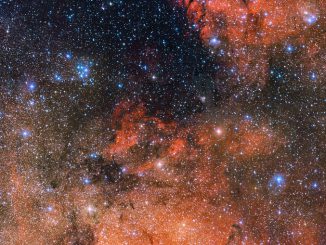
Charles Messier




Catch sight of a celestial owl flying overhead in the spring sky
Owls may be scarce near your favourite viewing spot, but the Northern Hemisphere spring sky contains one celestial owl that you can track down in small telescopes – Messier 97 (NGC 3587). Commonly called the Owl Nebula, M97 is a planetary nebula discovered by Pierre Méchain in 1781 that is currently ideally placed for observation almost overhead at nightfall in the constellation of Ursa Major, the Great Bear.



A death star’s ghostly glow
The eerie glow of a dead star, which exploded long ago as a supernova, reveals itself in this NASA Hubble Space Telescope image of the Crab Nebula in the constellation of Taurus. But don’t be fooled. The ghoulish-looking object still has a pulse. Buried at its centre is the star’s telltale heart — a neutron star which beats with rhythmic precision.

ESO’S VISTA telescope reveals hidden stars in Messier 78
In this new image of the nebula Messier 78, young stars cast a bluish pall over their surroundings, while red fledgling stars peer out from their cocoons of cosmic dust. ESO’s Visible and Infrared Survey Telescope for Astronomy (VISTA) sees near-infrared light, which passes right through dust, permitting astronomers to probe deep into the heart of the stellar environment.

VST captures 615-megapixel image of open cluster Messier 18
Messier 18 is the small smattering of bright blue stars upper left of centre in this small-scale version of the original mammoth 30,577 x 20,108 pixel ESO image captured by the OmegaCAM camera attached to the VLT Survey Telescope (VST), located at the European Southern Observatory’s Paranal Observatory in Chile.

Messier 17 in Sagittarius: a cosmic rose with many names
This new image of the rose-coloured star forming region Messier 17 was captured by the Wide Field Imager on the MPG/ESO 2.2-metre telescope at ESO’s La Silla Observatory in Chile. It is one of the sharpest images showing the entire nebula and not only reveals its full size, but also retains fine detail throughout the cosmic landscape of gas clouds, dust and newborn stars.
